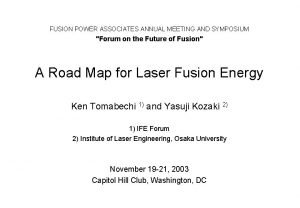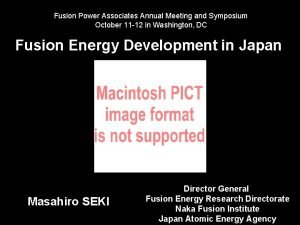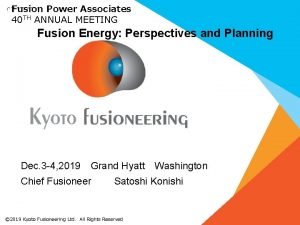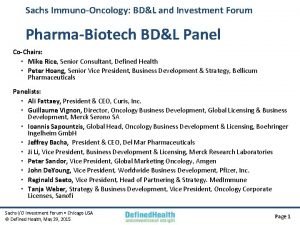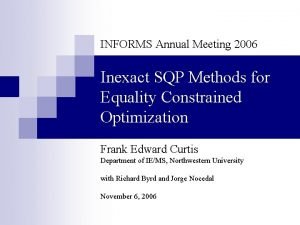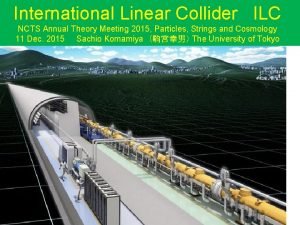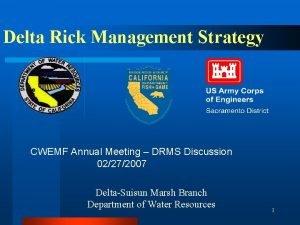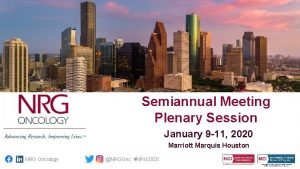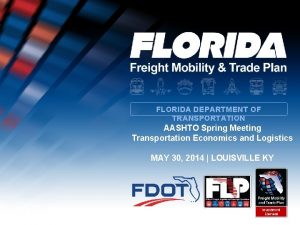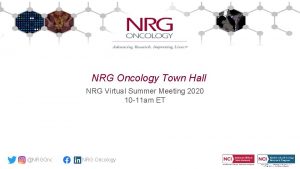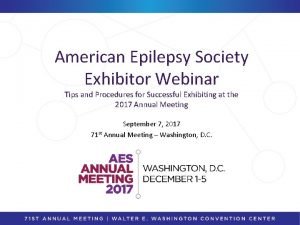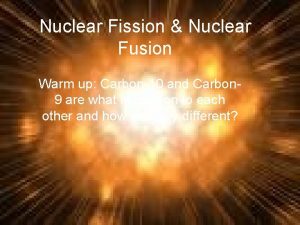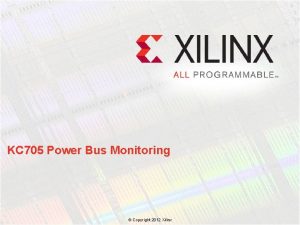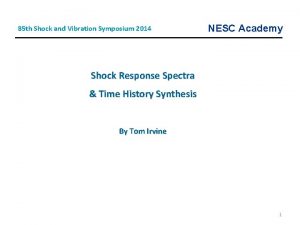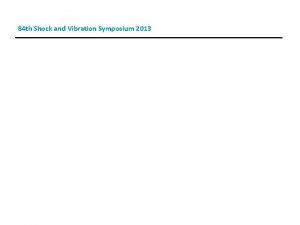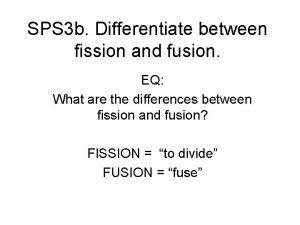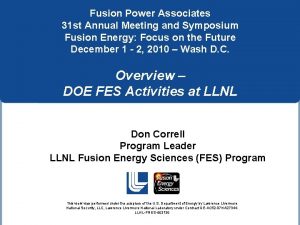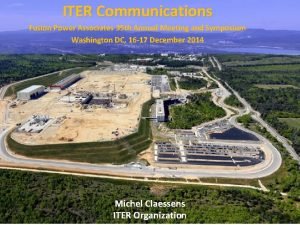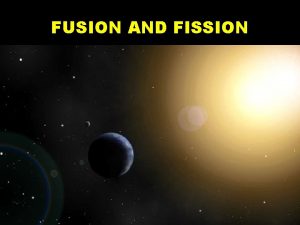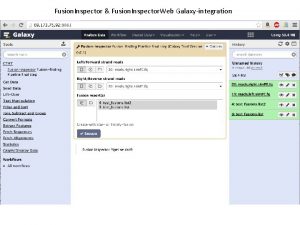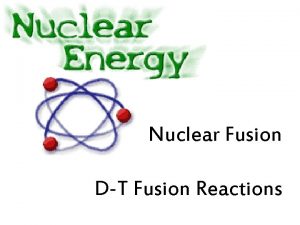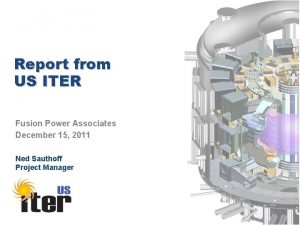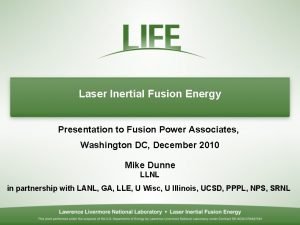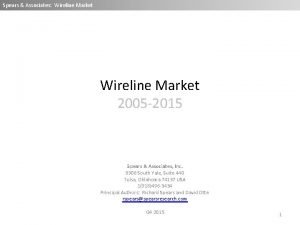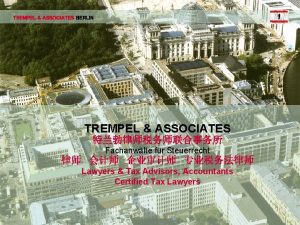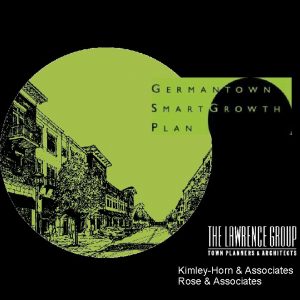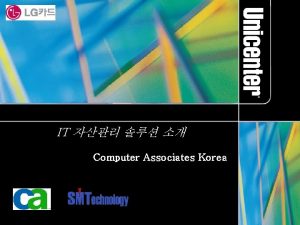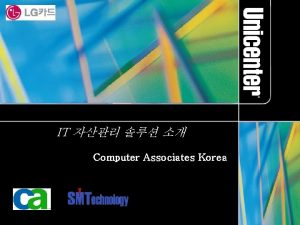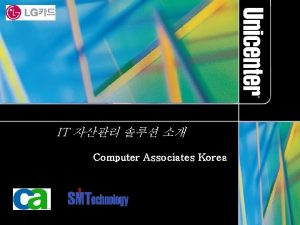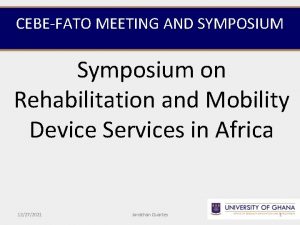FUSION POWER ASSOCIATES ANNUAL MEETING AND SYMPOSIUM Forum




























- Slides: 28

FUSION POWER ASSOCIATES ANNUAL MEETING AND SYMPOSIUM "Forum on the Future of Fusion" A Road Map for Laser Fusion Energy Ken Tomabechi 1) and Yasuji Kozaki 2) 1) IFE Forum 2) Institute of Laser Engineering, Osaka University November 19 -21, 2003 Capitol Hill Club, Washington, DC

Members of IFE road map committee Chair Co-chair Ken Tomabechi Yasuji Kozaki Hiroshi Azechi Kenichi Ueda Takuma Endo Yoshiro Owadano Kunihiko Okano Yuichi Ogawa Hirobumi Kan Tomoaki Kunugi Hiroyuku Kubomura Akira Koyama Tetsuyuki Konishi Akio Sagara Yoshito Souman Satoru Tanaka Yasuyuki Nakao Hitoshi Nakano Masahiro Nishikawa Takayoshi Noriamatsu Kunioki Mima Noriaki Miyanaga Takeo Muroga Masanobu Yamanaka Central Research Institute of Electiric Power Industry ILE, Osaka University The University of Electric-communications Nagoya University National Institute of Advanced Industrial Science and Technology Central Research Institute of Electiric Power Industry University of Tokyo Hamamatsu Photonics Kyoto University NEC Corporation Kyoto University (former Japan Atomic Energy Research Institute) National Institute for Fusion Science Japan Nuclear Cycle Development Institute University of Tokyo Kyusyu University Kinnki University Osaka University ILE, Osaka University National Institute for Fusion Science ILE, Osaka University

Introduction • The progress of implosion physics and DPSSL (Diode Pumped Solid-State Laser) In 1997 IFE Forum organized "The Committee on Development Program of Laser Fusion Energy" (chair Y. Kozaki), members of universities, national laboratories and industries in Japan, and proposed IFE road map which had two major facilities, HGX(High Gain Experiment) and LFER (Laser Fusion Experiment Reactor) using a MJ class DPSSL. • Fast ignition concept is attractive, because a high gain is achieved by small laser energy. The fast ignition experiment by PW laser at Osaka University demonstrated the heating efficiency of 20 % at the ignition equivalent laser intensity in 2002. FIREX-I (Fast Ignition Realization Experiment) project has started this year for demonstrating the heating up to ignition temperature, and FIREX-II is considered for demonstrating ignition. • The recent progress of fast ignition physics may bring a big change to an IFE road map, then IFE Forum organized a new committee "The Committee on Road Map for Laser Fusion Energy" (chair K. Tomabechi, co-chair Y. Kozaki) in 2002.

Purpose of The Committee on IFE Roadmap • To investigate conditions of achieving laser fusion energy and asses the possibility of fast ignition reactor concepts, • To identify milestones and necessary facilities, • To identify critical paths and estimate cost and manpower, • To propose a reasonable road map using fast ignition features and make a strategy of development including collaboration with industry.


Implosion Laser 100kJ Target Injector Turbine Generator 4 MWe Reactor Chamber Heating Laser 100kJ LFER (Laser Fusion Experimental Reactor) Cone Target : Fuel DT Ice 0. 1 mg Fusion Yield : 10 MJ / 1 Hz : Cone Pb. Li 400 mg Output Power : 10 MWth / 4 MWe

Summary 1. The inertial fusion energy development based on the fast ignition concept may offer a possibility to develop a practical small fusion power plant that may greatly enhance usefulness of fusion power to meet flexibly a variety of future energy needs. 2. The present assessment delineated a possibility to demonstrate electricity generation with a small power plant in a reasonably short time. It may be achieved by coordinated development efforts on relevant individual fusion technologies such as those of laser, reactor chamber, and fuel target, taking into account the characteristic advantages of the fast ignition concept. 3. It is important to advance both fast ignition physics research and reactor technology development in a coordinated manner, through the FIREX program and the reactor technology development program. Thus, it may become possible to move smoothly into the program to construct a laser fusion experimental reactor.

Summary(2) 4. The present rough cost estimates for developing high power lasers as well as for their repetitive engineering tests with a reactor chamber module amounts to approximately $360 millions, and those for construction of an experimental reactor approximately $1600 millions. 5. A key technology required for laser fusion, i. e. , DPSSL technology, may provide a new frontier for many high-tech industries, so that the efforts to develop the laser technology should be pursued not only for future energy needs but also with a strategic view of advancing the industries as a whole.

ILE OSAKA

ILE OSAKA Cone targets for a PW experiment and for a reactor of 90 MJ fusion yield. Cone targets irradiated by heating laser through from the cone have big merits not only to eliminate the affection of ablated plasma but also to reduce the requirements for laser beam focusing and target injection technologies. Sabot for Injection Pb. Li Cone 3. 5 mm DT Ice Fuel Cone Target for PW Laser Experiment (ILE) Cone Target for 90 MJ Fusion Pulse

ILE OSAKA FIREX (Fast Ignition Realization Experiment) Purpose: Establishment of fast ignition physics and ignition demonstration Starting Conditions : high denisity compression(already achieved), : heating by PW laser (1 ke. V already achieved) The overview of FIREX-II Heating laser 50 k. J palse width 10 ps imploson laser 50 k. J

Specification of laser fusion power plants

ILE OSAKA Cone targets for a PW experiment and for a reactor of 90 MJ fusion yield. Cone targets irradiated by heating laser through from the cone have big merits not only to eliminate the affection of ablated plasma but also to reduce the requirements for laser beam focusing and target injection technologies. Sabot for Injection Pb. Li Cone 3. 5 mm DT Ice Fuel Cone Target for PW Laser Experiment (ILE) Cone Target for 90 MJ Fusion Pulse

Milestones for Laser Fusion Power Plants • • • Fast Ignition Research Experiment (FIREX) ・Purpose: Establishing physics of fast ignition, and demonstration of ignion ・Starting Conditions: high denisity compression(already achieved), heating by PW laser (1 ke. V already achieved) Laser Fusion Experimental Reactor (LFER) ・ Purpose: Intergration of technologies necessary for laser fusion power plants, and demonstration of net electric power generation ・ Starting Conditions for engineering design : Clarify physics by FIREX-I(Heating to ignition temperature) : prospecting of key technologies ( 1 k. J high rep-rate laser, target injection and tracking, chamber, blanket, tritium technologies, etc. ) ・ Starting Conditions for construction : Ignition and burning by FIREX-II : Establishment of above technologies in elemental level Demonstration Reactor (DEMO) ・ Purpose: Demonstration of practical power generation including of economical, environmental, and safty prospection ・ Starting Conditions : Demonstration of net electric power and establishing technologies for practical power plants

Major facilities and milestones for fusion power plants Facility FIREX LFER DEMO Commercial plants Milestones Fast ignition physics establishment and ignition demonstration Demonstration of integrated reactor technologies and net electric power Demonstration of practical power generation - Phase I (FIREX-I) : Heating to ignition temperature (~10 ke. V) Phase II (FIREX-II) : Ignition and burning Phase I : high rep-rate burning Phase II : Solid wall with test blanket, and liquid wall chamber Phase III : Net power generation , long time operation Objectives Laser Fusion pulse energy/power output Construction cost - Demonstration of a - reactor module for - practical power plants -Credibility and - economics demonstr- ation - Economically, - environmentally - attractive plants - (Competitive COE) - Modular plants for - scale up, flexible - construction 200 k. J ( ~ 1 Hz ) 0. 5~1 MJ ( ~ 3 Hz ) 0. 5~1 MJ ( 10~ 30 Hz ) ~1 MJ (1 shot / hour) 10 MJ 10 MWth/ 4 MWe Net output 2 MWe 100 ~200 MJ 330 ~ 660 MWth 100 ~ 240 MWe 100 ~200 MJ 3 Hz (5~10) reactors 300 ~ 400 M$ ~ 1600 M$ ~ 2300 M$ ~ 2700 M$ / 1 GWe ~100 k. J implosion 50 + heating 50 600 ~ 1200 MWe

Size and thermal load of reactors


Implosion Laser 100kJ Target Injector Turbine Generator 4 MWe Reactor Chamber Heating Laser 100kJ LFER (Laser Fusion Experimental Reactor) Cone Target : Fuel DT Ice 0. 1 mg Fusion Yield : 10 MJ / 1 Hz : Cone Pb. Li 400 mg Output Power : 10 MWth / 4 MWe

Road Map of Fueling 2005 2010 2015 2020 2025 2030 FIREX (Fast Ignition Realization Experiment) Conceptual design Design High Repetition Test Facility LFER Laser Fusion Experiment Reactor Cryogenic Technology Foam method Design DEMO Power Plant Controlled beta layering Mass Production Elemental Technology Shell, Cone, Assembling Fuel Loading Design System integration Design Injection Pneumatic method Coil gun method On site Fueling system Multi injection system Burst mode Off site Target Factory Fabrication of foam shells Full injection system Continuo mode Shell with foaming Coating of gas barrier Tracking Optical phase conjugation method Matched filter method Replace W 1 with oil solution Immerse foam shells in Coating of foam insulator of Isophtaloyl chloride PVA solution with Na. OH Foam shell with gas barrier W 2 Crosslinked PVA Isophtaloyl chloride in p-chlorotoluene W 1 O PVA solution with Na. OH Foam insulatio n layer PVA solution with Na. OH Cross section Centering zone (20 min) 1 cm/s Polymerization zone (5 min) Stabilization zone (10 min) UV source to start polymerization CD shell with cone guide Harvest Mass production of shells will be realized with currently exciting technologies. Fuel loading would be the critical issue to reduce the inventory of tritium in the target factory.


Roadmap of Reactor System Development 2003 y 2005 2010 2015 2020 2025 Single shot FIREX II Engineering design CD ▲Power generation test Test of Integrated reactor technology LFER construction CD Chamber and blancket integration Test of solid wall chamber Test blancket development Blanket for power generation Chamber technology Element technologies Ion pulse irradiation for solid wall R&D of liquid wall Liquid wall Blancket technology Elemental R&D for liquid Li. Pb wall Pumping, Fueling and Tritium safety Pumping and Fueling R&D Basic experiment Tritium recovery R&D Final optics Conceptual design R &D ITER blanket R&D, High thermal load R&D IFMIF material test Test 2030 T 1 T 2 T 3 Demo of plactical power generation ▲ ED DEMO construction OP

Analysis of program schedule • Establishing physics of fast igniton (Ignition and burn by FIREX) < FY 2013 • 10 k. J laser driver and integration test on high repetition technologies: < FY 2015 • Demonstration of integrated fusion technologies and power generation (LFER) < FY 2026 • Demonstration of practical power generation (DEMO plant) < FY 2036

Estimation of program cost • FIREX(100 k. J single shot glass laser)300~400 M$ • Development of laser module for reactor, repetitive target irradiation technology (DPSSL 10 k. J for compression, 10 k. J for ignition) ~360 M$(Cost of LD is 180 M$ estimated from LD 600 MW, LD unit cost 30 cent/W assumption) • LFER(200 k. J laser、Themal~10 MW、Electricity~4 MW) ~1600 M$ (Cost of LD is 600 M$ estimated from LD 6 GW, LD 10 cent/W) • DEMO(1 MJ laser、Thermal 200 MJ、3 Hz、Net electric power 200 MW) 〜 2300 M$ ( Total laser driver cost is 1350 M$ estimated from LD 6 cent/W) • Commercial plant(600~1200 MWe with multi reactor modules) 2700 M$/GWe( Total laser driver cost is 1000~1500 M$ )


Critical Issues and Major Tasks • • Physics issues and major tasks (2002~2015) - Fast ignition physics establishment and demonstration of ignition and burning (FIREX with high density implosion cone target) Driver issues and major tasks (~2012) - High repetition high power laser (100 J and 1 k. J DPSSL module, and excimer laser module development) - LD cost down (not only mass production but also technical breakthrough) - Long-lifetime and wide spectrum laser-material development (coupled with LD development) Target technologies issues and major tasks (~2012) - Cryo-target fabrication and cone target technologies - Target injection, tracking, and shooting technologies Reactor technologies issues and major tasks (~2012) - Chamber wall protection technologies (for FIREX , and the high rep-rate burning experiment) - Liquid wall chamber feasibility studies, simulation on liquid wall ablation, evacuation, and free liquid surface control -Reactor structural material and final optics (pulse irradiation with charged particles and neutrons) -Selfconsistent reactor design (for guiding key technology R&D and preparing LFER design)

From KOYO to KOYO-Fast • KOYO design (Central hot spark ignition) • • • laser energy 4 MJ Fusion yield 400~600 MJ Reactor module ~ 600 MWe Laser cost ~4000 M$ ( assumption of LD unit cost 5 cent/W) Large output modular plant ~2400 MWe (for competitive COE) KOYO -Fast design (Fast ignition) • • • laser energy 500 k. J~1 MJ Fusion yield 100~200 MJ Reactor module 100~240 MWe Laser cost 500~1000 M$ (LD unit cost 5 cent/W) Small output modular plants 600~1200 MWe (for a variety of future energy needs)

Summary 1. The inertial fusion energy development based on the fast ignition concept may offer a possibility to develop a practical small fusion power plant that may greatly enhance usefulness of fusion power to meet flexibly a variety of future energy needs. 2. The present assessment delineated a possibility to demonstrate electricity generation with a small power plant in a reasonably short time. It may be achieved by coordinated development efforts on relevant individual fusion technologies such as those of laser, reactor chamber, and fuel target, taking into account the characteristic advantages of the fast ignition concept. 3. It is important to advance both fast ignition physics research and reactor technology development in a coordinated manner, through the FIREX program and the reactor technology development program. Thus, it may become possible to move smoothly into the program to construct a laser fusion experimental reactor.

Summary(2) 4. The present rough cost estimates for developing high power lasers as well as for their repetitive engineering tests with a reactor chamber module amounts to approximately $360 millions, and those for construction of an experimental reactor approximately $1600 millions. 5. A key technology required for laser fusion, i. e. , DPSSL technology, may provide a new frontier for many high-tech industries, so that the efforts to develop the laser technology should be pursued not only for future energy needs but also with a strategic view of advancing the industries as a whole.
 Fusion power associates
Fusion power associates Fusion power associates
Fusion power associates Fusion energy
Fusion energy Immuno oncology bd&l and investment forum
Immuno oncology bd&l and investment forum Informs annual meeting
Informs annual meeting Aupha annual meeting
Aupha annual meeting American psychiatric association annual meeting 2020
American psychiatric association annual meeting 2020 Ky masonic lodges
Ky masonic lodges Annual theory meeting
Annual theory meeting Cwemf
Cwemf How to run an annual general meeting
How to run an annual general meeting Nrg oncology conference
Nrg oncology conference Aashto annual meeting 2015
Aashto annual meeting 2015 Scts annual meeting
Scts annual meeting Nrg oncology semiannual meeting 2021
Nrg oncology semiannual meeting 2021 American epilepsy society annual meeting 2017
American epilepsy society annual meeting 2017 What is meeting and types of meeting
What is meeting and types of meeting What is meeting and types of meeting
What is meeting and types of meeting Real power and reactive power
Real power and reactive power Who discovered uranium
Who discovered uranium Texas instruments fusion digital power designer
Texas instruments fusion digital power designer For todays meeting
For todays meeting Proposal kickoff meeting agenda
Proposal kickoff meeting agenda What is symposium method
What is symposium method Shock and vibration symposium
Shock and vibration symposium Shock and vibration symposium
Shock and vibration symposium Difference between fission and fussion
Difference between fission and fussion Capitol raceway crofton
Capitol raceway crofton Dual perpetrator model
Dual perpetrator model
